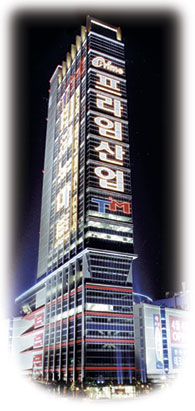TES Comfort Cooling
Thermal Energy Storage (TES) systems employ the production of ice or chilled water during off-peak electrical usage periods (usually at night) using lower cost electricity. This stored energy is then used during on-peak electrical usage periods for air conditioning. Thermal energy storage systems can be sized to operate in a load-shifting or load-leveling strategy.
Load-Shifting
The TES system runs during off-peak hours and enough energy is stored to meet the heat load demands during the on-peak hours of operation, thus allowing for a much smaller refrigeration system to meet the load and eliminating expensive electrical consumption during on-peak hours.
Load-Leveling
The TES system is allowed to operate 24 hours a day and the stored energy is used during periods where electrical demand charges apply, eliminating such charges and reducing energy costs.
Smaller Capacity Equipment
Compared to traditional cooling systems, TES refrigeration systems utilize smaller capacity equipment and typically operate during off-peak hours, reducing operating costs.
Energy savings
Thermal energy storage systems provide energy savings when there are high loads of short duration, high electric power demand charges, or low electrical charges during off-peak hours. Additionally, lower ambient temperatures at night enhance operating efficiency.
|

TM 21 Commercial
Building, Seoul, Korea.
100% cooling load handled
by MaximICE
|
|
|
Advantages of the MaximICE Slurry Ice TES system over traditional equipment:
|
This unique ice slurry technology delivers a continuously high heat transfer and saturated suction temperature throughout the entire ice-build cycle, thus achieving energy efficiency which is unmatched by static systems using coils or ice balls, or even ice harvesters with defrost cycles which consume energy to harvest the ice. The thermal characteristics of this soft, pumpable ice provide additional system benefits which can’t be achieved by traditional TES systems.
|
|
Following are some of the key advantages:
<> Most energy efficient ice generator available.
<> Largest capacity systems available in the smallest footprint.
<> Consistently low delivery temperature.
<> Flexibility to optimize system efficiency under
variable load conditions.
<> Flexibility to operate as a chiller as well as an
ice maker.
<> Flexible and cost effective tank design and utilization.
|
|